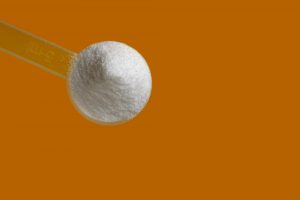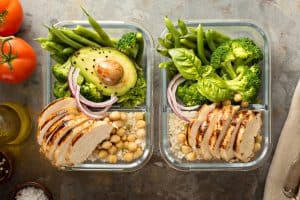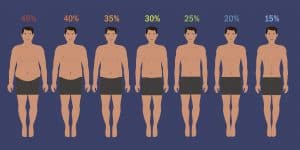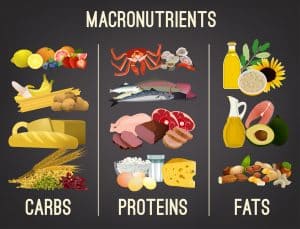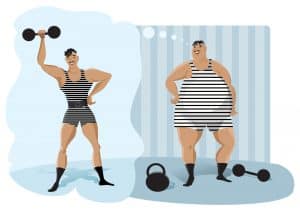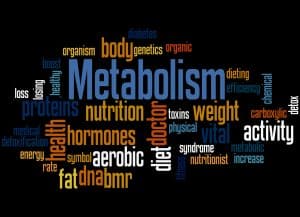I’d finally reached my training goals—tight, toned muscle with little body fat.
This had meant severely restricting my caloric intake. I wanted to retain this physique but also understood my body couldn’t sustain such a low-energy diet for much longer.
I knew as soon as I started eating normally again, the weight would pile on, and my definition would be lost. I needed a solution.
Thankfully, I discovered reverse dieting—and I’ll share its phenomenal secrets with you.
What Is Reverse Dieting?
After severe or repeated periods of caloric restriction—whether cutting for competition or just trying to drop weight—the metabolism is put under immense pressure.
As a survival mechanism, the body becomes proactive and alters the way it functions. Most significantly, in response to what it effectively sees as starvation—it lowers the number of calories burned in a day.
Hence, if you’re still following the diet—your weight loss can plateau out. Alternatively, if the diet has ceased and you begin to eat normally again—you can gain excess pounds remarkably quickly.
Similar to refeed days, reverse dieting is a method to “reboot” the metabolism—stimulating it to utilize calories again—not store them for later use. Often, it’s referred to as the diet after the diet. A regime followed to slowly elevate caloric intake—without putting on weight.
How the Metabolism Adapts During Dieting
Drastically dropping the calories affects NEAT (non-exercise activity thermogenesis). That is, the calories burned in regular day-to-day life—walking, climbing stairs, fidgeting, etc.
The body, sensing a low-calorie intake, protects itself by:
- Slowing down organ function.
- Lowering production of metabolism boosting hormones such as testosterone, ghrelin, and adrenalin.
- Slowing your heart.
- Making muscles more efficient—needing less fuel.
Hence, while your body in this mode, rapidly elevating calorie consumption will result in weight gain.
The Benefits of Reverse Dieting
Cutting back the calories may be a powerful method of dropping the pounds—but, it’s unsustainable.
Adequate intake of calories isn’t just a requirement for overall health. Research shows that continually restricting consumption can lead to eating disorders, depression, and lowered brain function.
Hence, at some point, you’ll need to reintroduce more calories for wellbeing.
Reverse dieting is useful for:
- Bodybuilders and Athletes
Whether preparing for a competition or just trying to achieve the ultimate physique—bodybuilders undergo a period of cutting. That is, a dietary and training cycle of 12-16 weeks that allows them to drop fat while retaining muscle.
Equally, many athletes, especially those involved in fighting pursuits—need to achieve a particular weight to allow them to compete in their sport.
Reverse dieting allows these men and women to return to normal caloric intake without piling on the pounds.
- People Who Have Hit a Dieting Plateau
As mentioned earlier in this reverse dieting article—the body adapts to low-energy intake—slowing the metabolism.
This means that weight loss may be rapid in the first few weeks—but soon the body requires less energy to function—slowing down or stopping pound-shedding entirely.
Reverse dieting kick starts the metabolism—and may elevate weight loss. Not only is this due to increases in thermogenic behavior, but restarting testosterone production speeds up lipolysis (fat burning).
- People Who Want to Maintain Weight
How often do you hear tales of people who have dramatically lost weight—only to pile it straight back on again once the diet has finished?
Reverse dieting can help successful dieters to maintain the ideal weight they’ve worked hard to achieve.
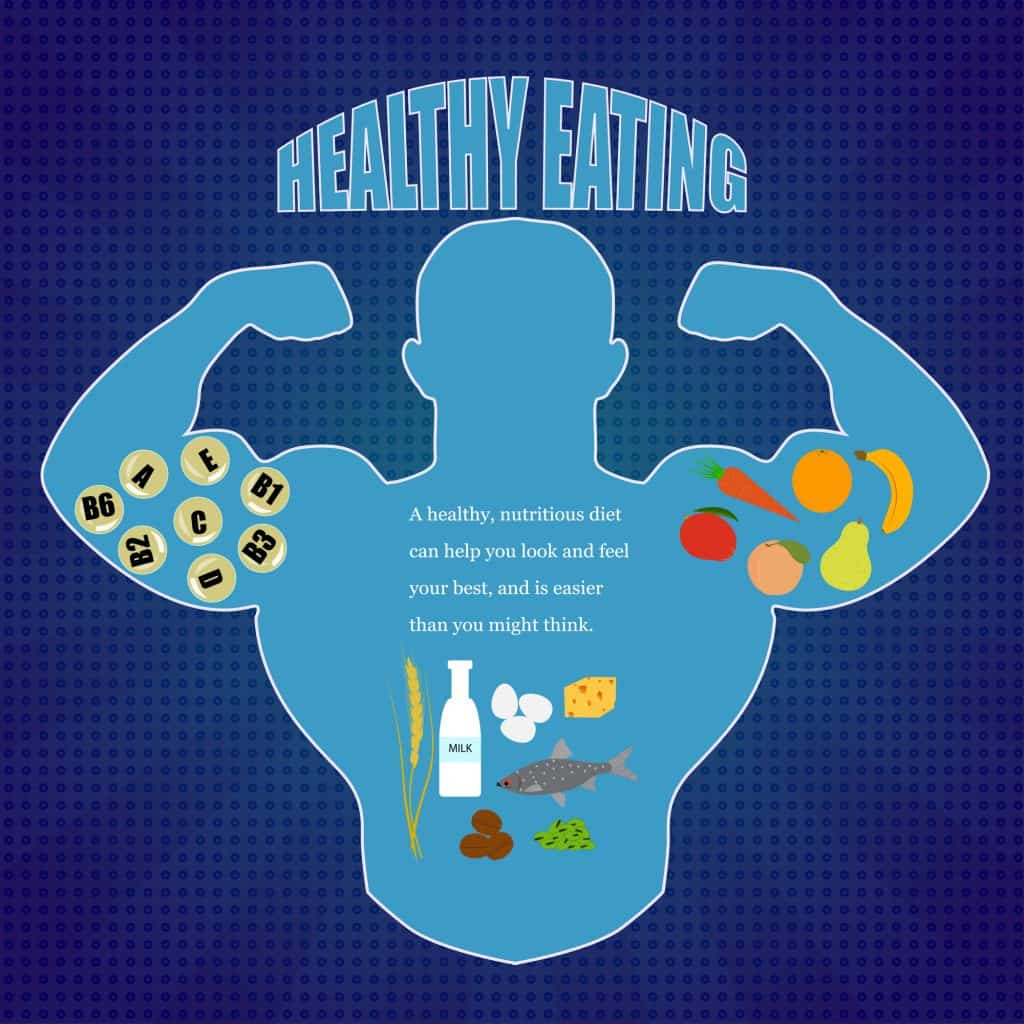
The 4 Steps for Reverse Dieting Plan
Here are the four critical stages for the ultimate reverse dieting plan.
1
Calculate Your Current Calories and Macros
To begin, you need to calculate your current maintenance calories (or TDEE) and macro intake.
For five days—if you’re not already doing so—make a diary of everything that you eat. From this list, ascertain on average, how many calories you are consuming daily. A simple way of doing this is by using the USDA (United States Department of Agriculture) database.
Let’s assume you find out its 2000 calories per day.
Your protein intake should be at least one gram per pound of your body weight—so if you weigh 160 pounds, you require 160 grams of protein per day.
Then, use this figure to calculate your remaining calorie allowance as follows:
Calories from protein = 160 grams x 4 calories per protein gram = 640 calories
Calories from fats and carbs = 2000 – 640 = 1360 calories
In this example, from these remaining 1360 calories, split them into a 60/40 carbohydrates to fats ratio. This forms the basis on which you’ll increase your intake.
2
Begin to Raise Your Carb and Fat Intake
You need to ask yourself an important question—is boosting calorie intake more important than gaining fat?
For example, if you’re going into a bulking cycle—you’ll need a heavy caloric surplus—and gaining weight may not be a significant issue.
However, if you’ve attained your ideal weight through dieting, putting on any more pounds may be entirely out of the question, especially when incorporating a flexible dieting approach.
Hence this affects how quickly you “up” your carb and fat intake.
For bulk with little concern for weight gain—increase your consumption of these two macros by 15-20 percent in the first seven days. Then, continue at the rate of 6-10 percent increases in the following week.
To maintain current weight, increase your carbs and fats by 2-5 percent every seven days.
3
Check the Scale
While I’m not usually in favor of constant weight checking—with reverse dieting, it’s essential.
On the same three days per week—weigh yourself as soon as you awake. At the end of the seven days, you’ll have a picture of how your regime is progressing.
If you see a rapid weight gain—and that’s not desired—cut back the carbs and fats again to pre-reverse dieting levels and then begin to increase at a reduced rate from step 2 above.
Alternatively, if you’re still losing weight, or not gaining mass as fast as you would like, increase the uptake.
4
Lift (Heavier) Weights
Resistance training is an integral part of reverse dieting.
It’s one of the best ways of boosting metabolism in both the long and short term. Firstly, it acts to stimulate REE (resting energy expenditure). Secondly, muscle requires fuel to be maintained—boosting energy uptake.
So, as you increase your calorie intake try to increase the wights you lift in the gym with a reduced number of reps.
Reverse Dieting After Competition
Post competition, the above plan is the ideal way to progress steadily into a bulking phase—but without losing definition too quickly.
However, there are a couple of points to address specific to bodybuilders.
Firstly, immediately prior to competing, most lifters reduce sodium intake to prevent water retention.
Post competition—if these lifters go on a cheat-food “binge”—sodium levels can escalate rapidly. This can promote the onset of edema—fluid gains. Furthermore, excessive sodium is hard on the kidneys.
Hence, when reverse dieting after competition, introduce salt slowly back into your food consumption.
Secondly, as both cutting and the use of illegal supplements can affect hormone volumes—especially testosterone—it’s worthwhile considering using products to restore levels to normal. For example, testosterone boosters.

Reverse Dieting After Keto
Boosting the metabolism through reverse dieting on keto follows a similar procedure to the above. You will need to reintroduce carbs—but not at the same rate as those on a “typical” diet.
Here’s how to tailor reverse dieting for coming out of keto.
- As a keto practitioner, you already know your macro intake (you’re following it as part of your diet)—usually around 60:30:10 of fats, proteins, and carbs.
- Calculate your current daily calorie intake using the diary method mentioned earlier. Eventually, you’re looking to achieve a 30:30:40 split of these macro calories.
- Elevate your caloric intake by 2 percent per week—by raising carb intake while dropping fat.
- Continue until you reach your target energy consumption.
Many Keto dieters follow a time-planned reverse dieting procedure, similar to carb cycling. That is, consuming your daily carbs around two hours prior to any exercise you may perform.
Anecdotally, this reduces the carb “hit” preventing rapid mass gains.
When to Stop Reverse Dieting
The decision to stop reverse dieting depends on your goals.
If you’re looking to boost mass, then stop reverse dieting when you reach your ideal weight.
Alternatively, if you’re looking to resume your pre-cutting caloric intake—cease reverse dieting when your macros hit that figure.
In both these circumstances, you can ascertain the caloric intake required to maintain your current weight by using the above calculators.
Reverse Dieting Myths
As reverse dieting is a reasonably new phenomenon, there is minimal specific scientific research on this program.
This has led many people to believe that it’s a fad and ineffective.
The fact is this—in theory, reverse dieting works.
As referenced earlier, studies show that caloric deficits slow the metabolism and impinge negatively on physiological processes. Furthermore, this research illustrates that quickly increasing caloric intake can lead to weight gain.
Additionally, there are vast amounts of anecdotal evidence illustrating reverse dieting’s efficacy.
In 2014, experts concluded there was validity in the theoretical science, and further research was recommended to investigate its process.
One myth that the anti-reverse dieting proponents often state is valid. Weight gain post diet doesn’t always mean fat gain.
Elevating food intake increases weight short-term—as the gut is holding more food, fluid intake increases, and glycogen levels rise.
This is why I suggest that you continually monitor your weight—so that these differences are seen to be transitory—and not always an indicator of elevated fat mass.
The Takeaway
While further investigation into reverse dieting is necessary—the theoretical and practical evidences indicate that it’s effective.
Follow the above program and tips to ensure you safely restore your caloric intake—to get you off that weight loss plateau, gain weight, or maintain your current ideal level.



